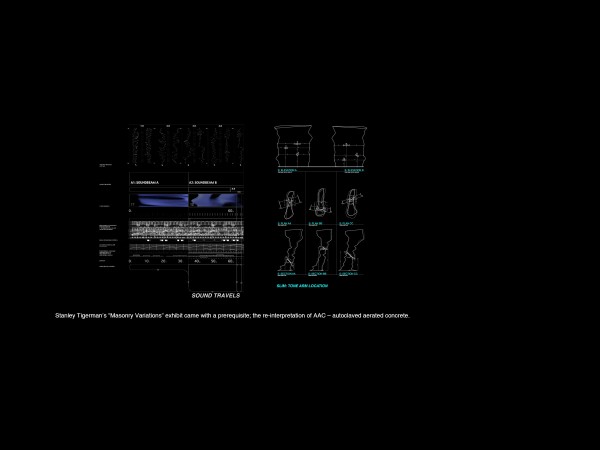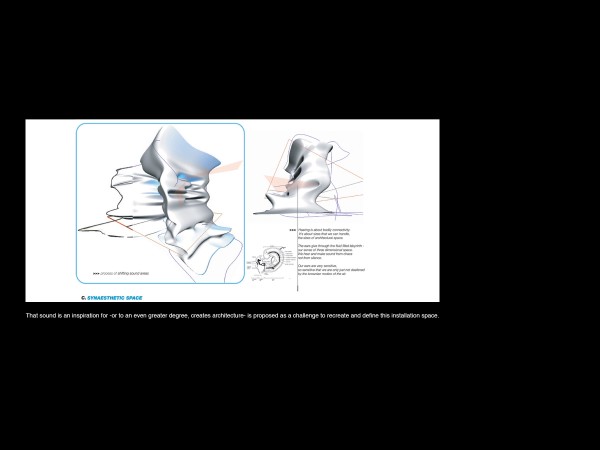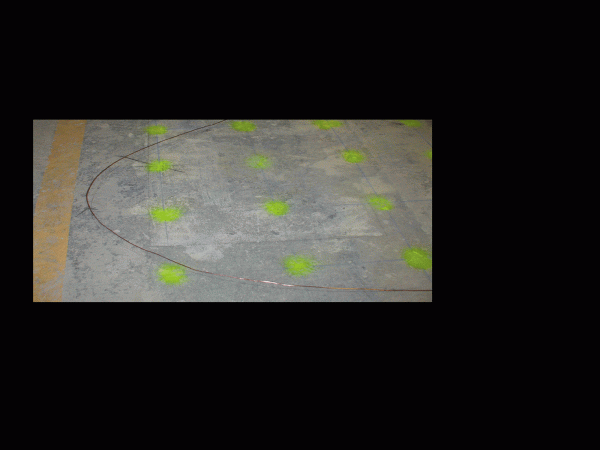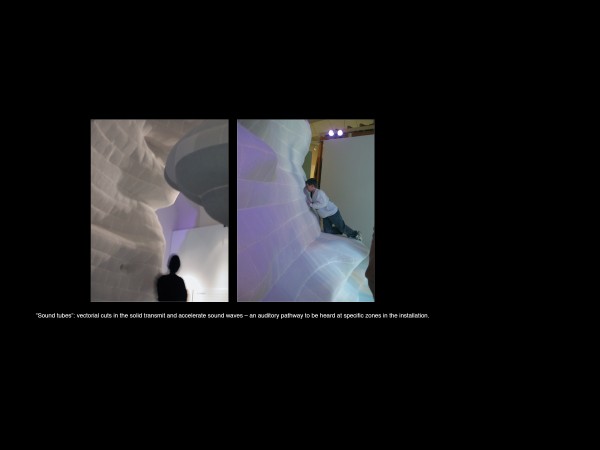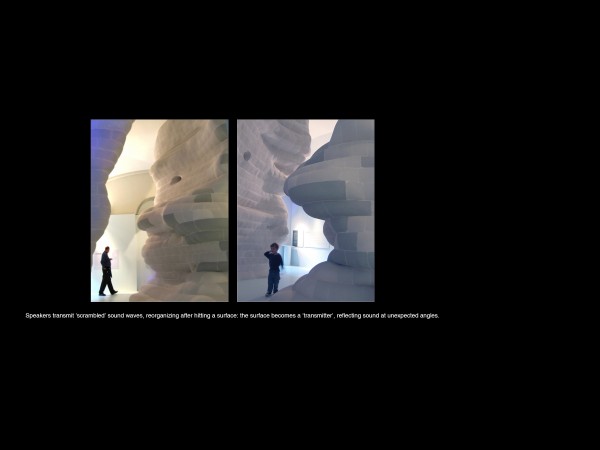
Scroll all the way down below the credits to view a selection of publications on this work!
The invitation for the exhibit “Masonry Variations” at the National Building Museum included four architects and was curated by Stanley Tigerman. It came with a prerequisite; the re-interpretation of traditional materials, for us the use of AAC – autoclaved aerated concrete. AAC is easy to mold and simple to assemble into a lightweight architecture.
Lightweight architecture, we found, has always been inexorably connected with sound and acoustics. The Phillips Pavilion by Le Corbusier in Brussels, the ‘bra installation’ of Vito Acconci [1990- 1991] and the design for the Berlin Philharmony by Hans Scharoun [1963] are impressive examples of lightweight architecture. All of these examples share in common the fact that they were created from a lightweight material, a membrane and that sound was the primary inspiration behind the design conception. Consequently it could be put forward that these skin-like structures are in fact organic reflections of sound which create and define new spatial experiences and atmospheres. The visitor in this sense not only occupies the space but also becomes an integral part of the acoustic experience, altering the acoustic environment and inevitably making these spaces interactive.
The phenomenon that sound in itself is an inspiration for architecture -or to an even greater degree, creates architecture- is proposed as a challenge to recreate and define this installation space. A composer was asked to write a music score for the space. Its frequencies were translated in Maya in surface deformation forces. This software enables the forces to scan, deflect and transform the soft solid’s surface, creating two objects: the soundscapes.
In the exhibition special speakers developed by ‘Robotics International’ transmit ‘scrambled’ sound waves which reorganize once hitting a surface, translating the surface into a ‘transmitter’. The automated rotating speakers will slowly scan the surface of the soft solids, sounds will be deflected from its already transformed surface and be transmitted in unexpected angles. The resulting synaesthetic space is an experience of multiplicities, overlapping sound zones, at once exiting and meditative. The ear will inform the eye and vice versa. A bodily experience which seduces to relax, stay and dream.
“Sound tubes” or vectorial cuts in the solid not only transmit but also accelerate sound waves in the center-space – an auditory pathway to be heard at specific compression zones in the installation. It metamorphoses into a hybrid environment of sound bites, light ripples and silence - an interactive experience for the visitor who, while moving through the space, will never experience the same ‘travel’ twice.

